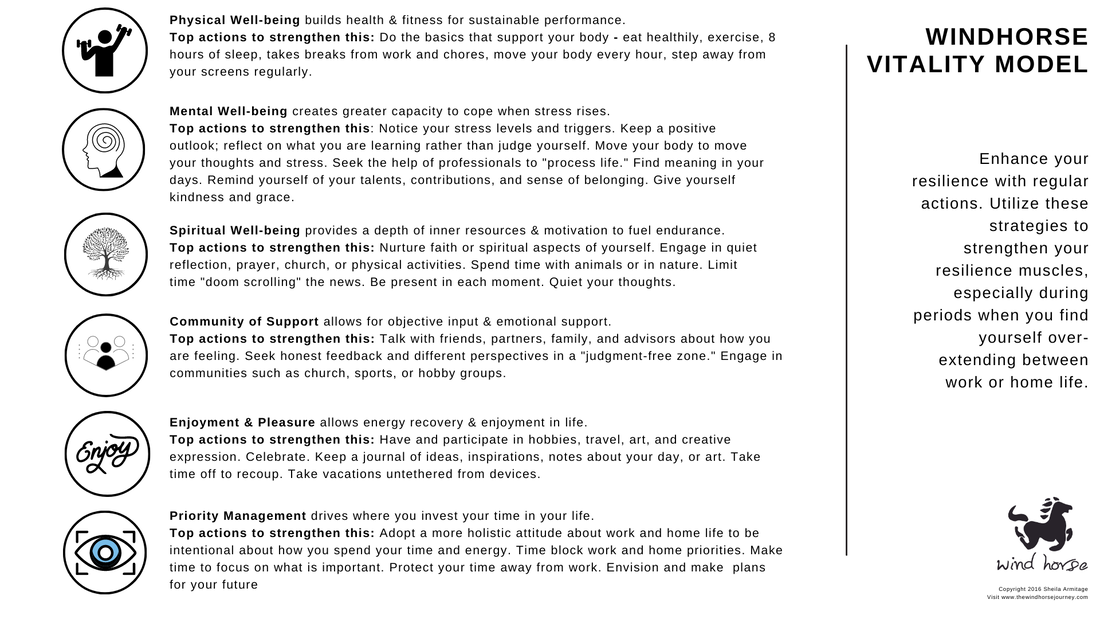 “You don’t think your way into a new kind of living. You live your way into a new kind of thinking,” Henri Nouwen. This powerful quote reminds us that what we focus on ultimately shapes our experiences and outcomes. By shifting our focus towards building thriving skills, we can rewrite our internal narrative from "burnout" or "stress recovery" to a life well-lived. In this article, we'll explore the concept of burnout, its causes, and how to redirect our energy towards cultivating resilience and thriving. When it comes to burnout, it's essential to take a step back, assess where we are on the stress and burnout curve, and reset how we allocate our time, energy, and mental game. The truth is life is “a non-stop triggering machine,” states top executive coach, Marshall Goldsmith. Some people thrive, while others do not – even when all things are equal. So what drives this? Resilient individuals possess a set of psychological traits and coping mechanisms that allow them to adapt. They return to applying this skillset on a regular basis, re-setting themselves when either work or home life causes them to drop a few skills for a while. What is Burnout? Christina Maslach, who created the widely-used Maslach Burnout Inventory, defines it as “erosion of the soul caused by deterioration of one’s values, dignity, and spirit.” Herbert Freudenberger defined it as “a state of mental exhaustion caused by one’s professional life.” Recognize the Symptoms and Impact of Burnout Burnout manifests in three main categories of symptoms: 1. Emotional exhaustion - feeling overextended, overworked, and numbed to situations where you would normally feel empathy or compassion. 2. Depersonalization - cynical, detached, and objectifying people, and thirdly 3. A sense of low personal accomplishment or meaning - you feel you do not make a meaningful difference, are ineffective, and have negative feelings about yourself. These symptoms, when left unaddressed, can severely impact physical and mental health, work performance, and relationships. Take a moment to reflect on what burnout factors are affecting you. Consider asking someone who knows you well for an honest opinion. Understand the Contributing Factors Burnout can arise from various factors, both external and internal. While demanding workloads, lack of autonomy, and poor colleague relationships can contribute to burnout, personal characteristics such as perfectionism, self-deprivation, and unrealistic expectations can also play a role. Recognizing these factors is crucial for developing a holistic approach to prevent burnout in the workplace. Practices to Thrive Our Windhorse Vitality Model is a blue-print of sorts. The Windhorse Vitality Model comprises six pillars or muscle groups that play a crucial role in building resilience: physical well-being, mental well-being, spiritual well-being, community of support, enjoyment and pleasure, and priority management. Within each pillar, there are daily, weekly, and monthly actions that contribute to overall well-being. Thrivers understand the importance of consistently investing time and energy in all six pillars. During particularly demanding periods at work or home, thrivers may find themselves temporarily prioritizing other responsibilities and putting certain actions within each pillar on hold, such as exercise, healthy eating, or social connections. However, they are keenly aware that returning to these pillars after intense periods is vital for their long-term well-being. They also recognize that if work demands consistently require an unsustainable lifestyle of overwork, it may be a sign that the company culture is not the right fit for them. Thrivers prioritize living their lives in ways that align with their values and protect their health. It is a way of living and enjoying life focusing on what's most important for them. They transform stress by coming back to "living" these Vitality Principles. This does not mean they don't work hard. In fact, these talented individuals often excel in their roles, achieve high sales, secure leadership positions, and drive innovation. Another benefit of the actionable Windhorse Vitality Model lies in its accessibility to people from all socio-economic backgrounds. The actions thrivers take do not demand significant financial investments in equipment or memberships, nor do they require specific timing. This makes the model inclusive and accessible to all individuals, regardless of their financial resources or job status. Here are some actionable steps to incorporate into your life:
By harnessing the potential of Windhorse Vitality Practices, you can embark on a journey of resilience, growth, and fulfillment. Experiment with these practices, have fun, and be open to learning and repeating what works for you. There's no need for guilt. Embrace the simplicity of taking one step at a time. What's more, these vitality principles are good for individuals, for businesses, communities, and the world. Data show that the benefits cross domains - from individuals, to family, health, community, country, and the bottom lines of business. Join the conversation and share your thoughts. We'd love to hear your insights, experiences, and ideas on this topic. Comment below and let's engage in a positive and enriching discussion together. Visit us at: Linked In Ultimate Friend Quest Community Youtube Channel Sources:
1. Maslach C, Jackson SE, Leiter MP. Maslach Burnout Inventory Manual. 3rd ed. Palo Alto, CA: Consulting Psychologists Press; 1996. 2. “Burnout and Resilience, FAQ’s” was written by J. Adam Rindfleisch, MPhil, MD, (2014, updated 2017) https://www.va.gov/WHOLEHEALTHLIBRARY/tools/burnout-resilience.asp#ref-5 3. Armitage, S, Ph.D, Doctoral Dissertation 2016, A Blueprint for Work-Life Integration and Stress Reduction: Mindset, Behaviors and Life Outcomes
0 Comments
|
Author: SheilaAPassionate about people thriving, becoming stronger through adversity, and a community of friends. Archives
February 2025
Categories
All
|
explore connect thrive
|
|
📩 Contact us about how we can help your team move forward.
|
Web Hosting by iPage


 RSS Feed
RSS Feed